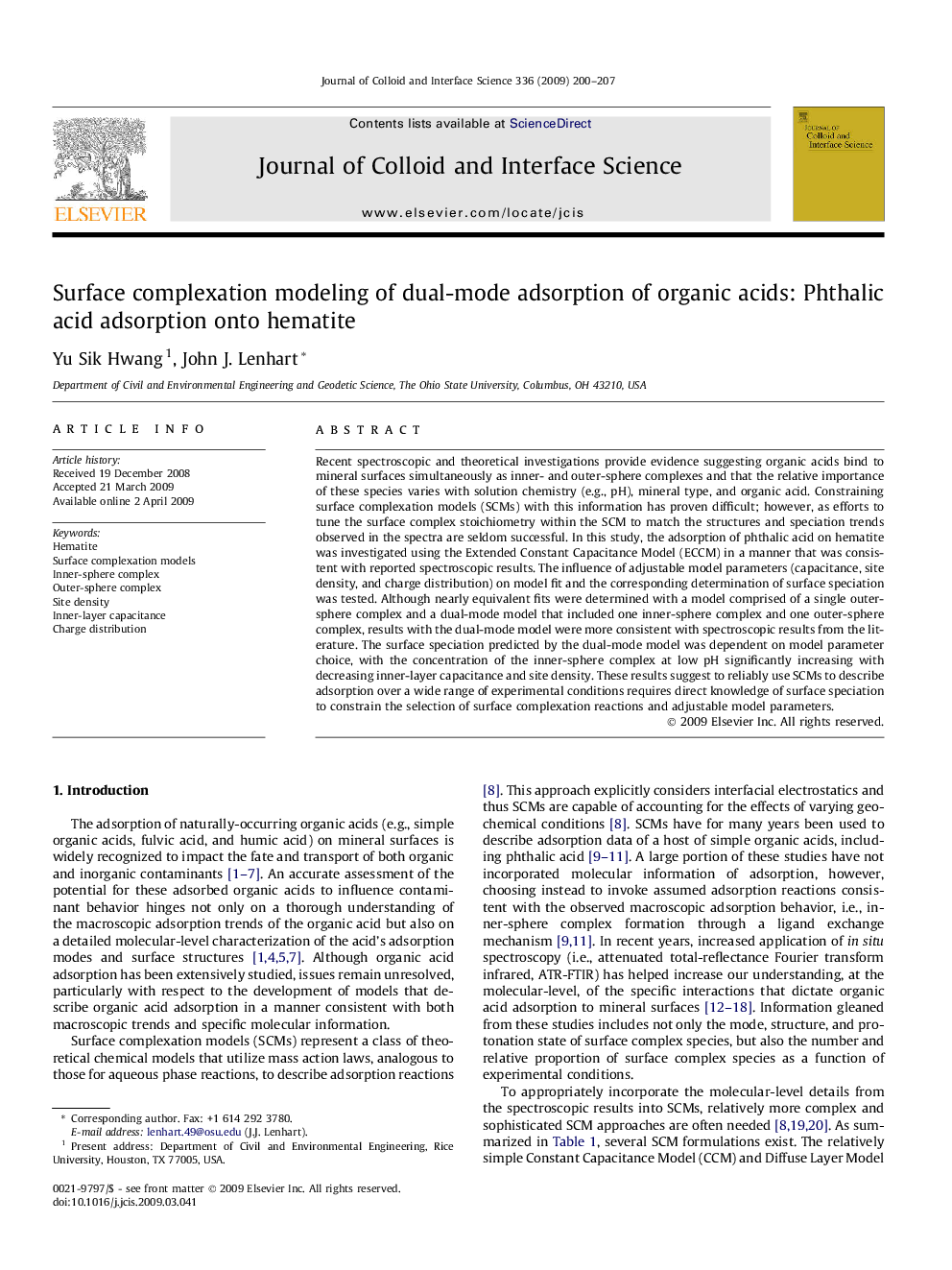| Article ID | Journal | Published Year | Pages | File Type |
|---|---|---|---|---|
| 610359 | Journal of Colloid and Interface Science | 2009 | 8 Pages |
Recent spectroscopic and theoretical investigations provide evidence suggesting organic acids bind to mineral surfaces simultaneously as inner- and outer-sphere complexes and that the relative importance of these species varies with solution chemistry (e.g., pH), mineral type, and organic acid. Constraining surface complexation models (SCMs) with this information has proven difficult; however, as efforts to tune the surface complex stoichiometry within the SCM to match the structures and speciation trends observed in the spectra are seldom successful. In this study, the adsorption of phthalic acid on hematite was investigated using the Extended Constant Capacitance Model (ECCM) in a manner that was consistent with reported spectroscopic results. The influence of adjustable model parameters (capacitance, site density, and charge distribution) on model fit and the corresponding determination of surface speciation was tested. Although nearly equivalent fits were determined with a model comprised of a single outer-sphere complex and a dual-mode model that included one inner-sphere complex and one outer-sphere complex, results with the dual-mode model were more consistent with spectroscopic results from the literature. The surface speciation predicted by the dual-mode model was dependent on model parameter choice, with the concentration of the inner-sphere complex at low pH significantly increasing with decreasing inner-layer capacitance and site density. These results suggest to reliably use SCMs to describe adsorption over a wide range of experimental conditions requires direct knowledge of surface speciation to constrain the selection of surface complexation reactions and adjustable model parameters.
Graphical abstractCapturing trends in surface speciation of adsorbed phthalic acid with surface complexation models consistent with spectroscopic results requires careful consideration of the inner-layer capacitance, site density, and charge distribution.Figure optionsDownload full-size imageDownload as PowerPoint slide
